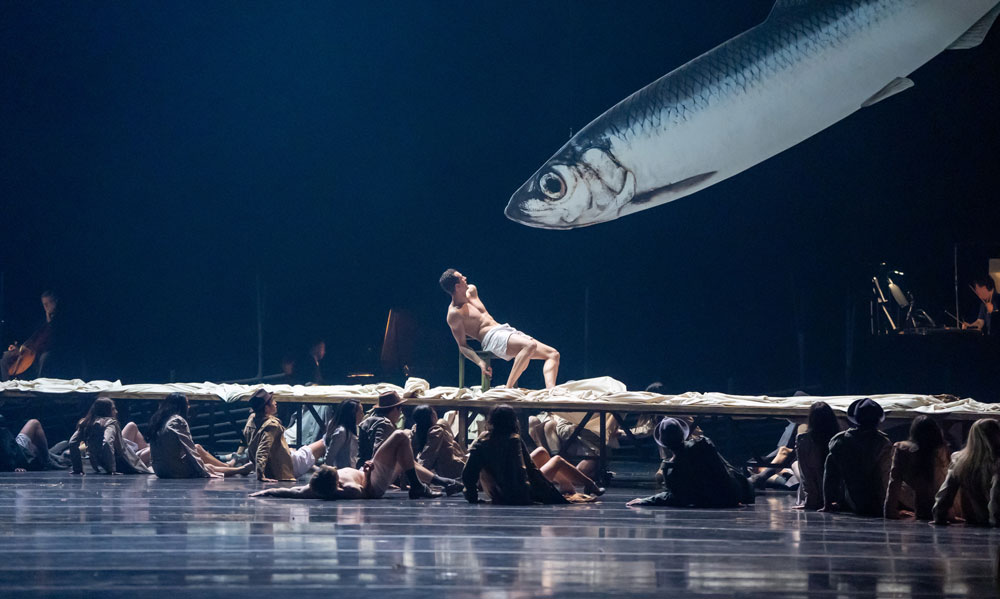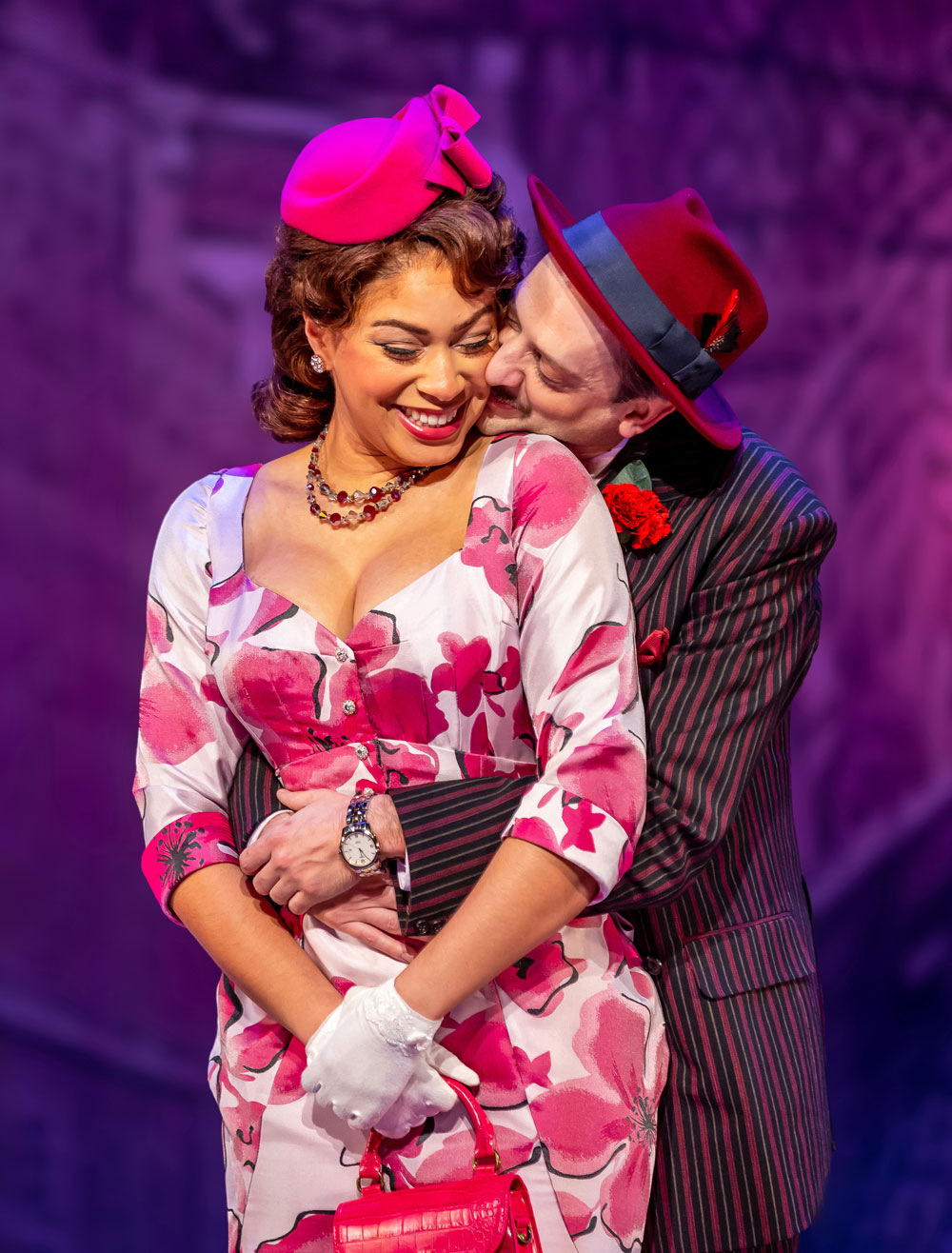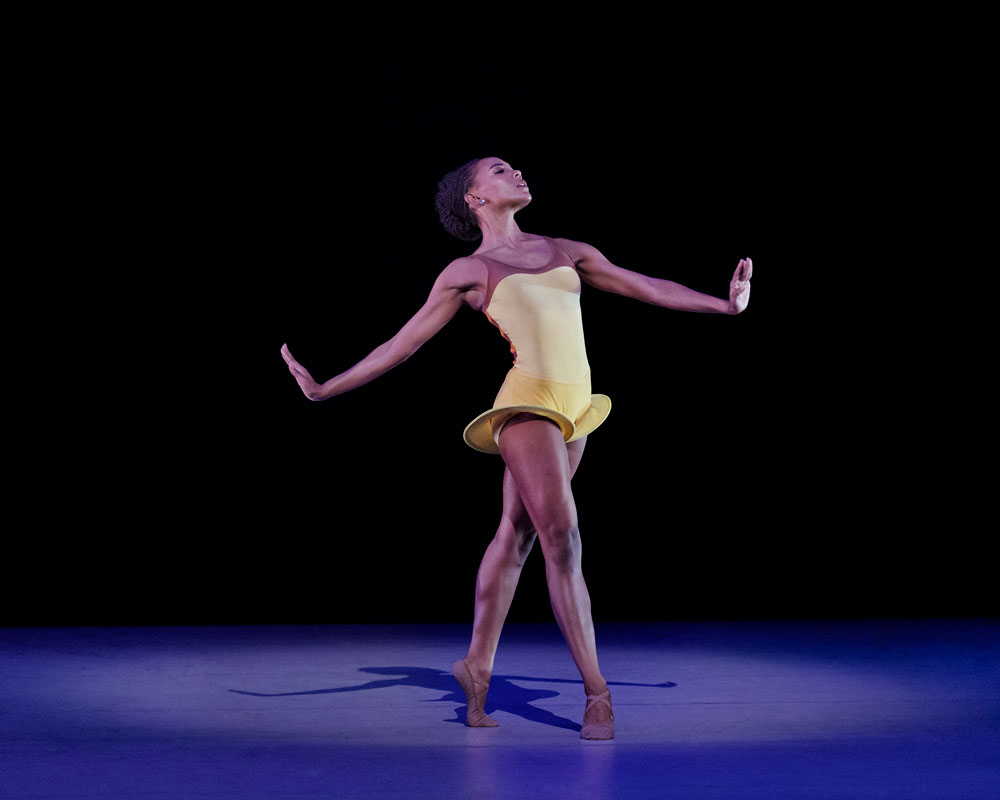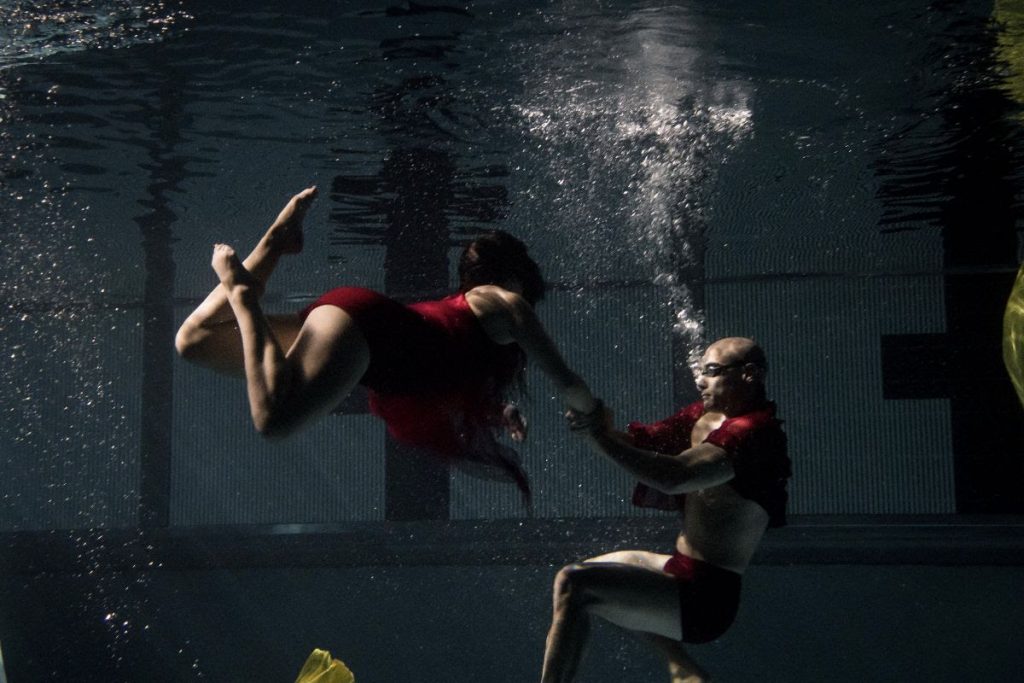
It’s surprising what can result from realized passions. For the past ten years, Melissa Mallinson and Nicole Gifford have pooled their creative energy to build and mount the Harvest Chicago Contemporary Dance Festival. Both have extensive backgrounds in dance and their annual event gives Chicago a chance to see trailblazing work being created both locally and around the country. Held at the Ruth Page Center for Performing Arts, the festival’s setting provides an intimate view of how imaginatively contemporary dance is being interpreted.
One of the most dramatic and radical works, Ripples from the Skin We Shed takes dance off the floor and places it underwater. Presented on film through the auspices of a university research grant and Take Root films, the screened performance proved that “moving rhythmically to music”, Webster’s definition of dance, can be transferred to an entirely different plane and remain viable and beautiful. Because of the way water affects movement, the format required dancers to use time differently. It also allowed the troupe to exploit the concept of buoyancy and use it as a tool to exaggerate grace. The sequence typifies how the Harvest dance festival ably showcases the way boundaries and limitations can be suspended when taking a fresh look at an ancient art form like dance.
That exploration was extended with Aerial Dance Chicago’s rendition of Stacked. Here aerial acrobatics are refined and choreographed allowing three dancers to coordinate their movements to create perpendicular rhythmic harmony.
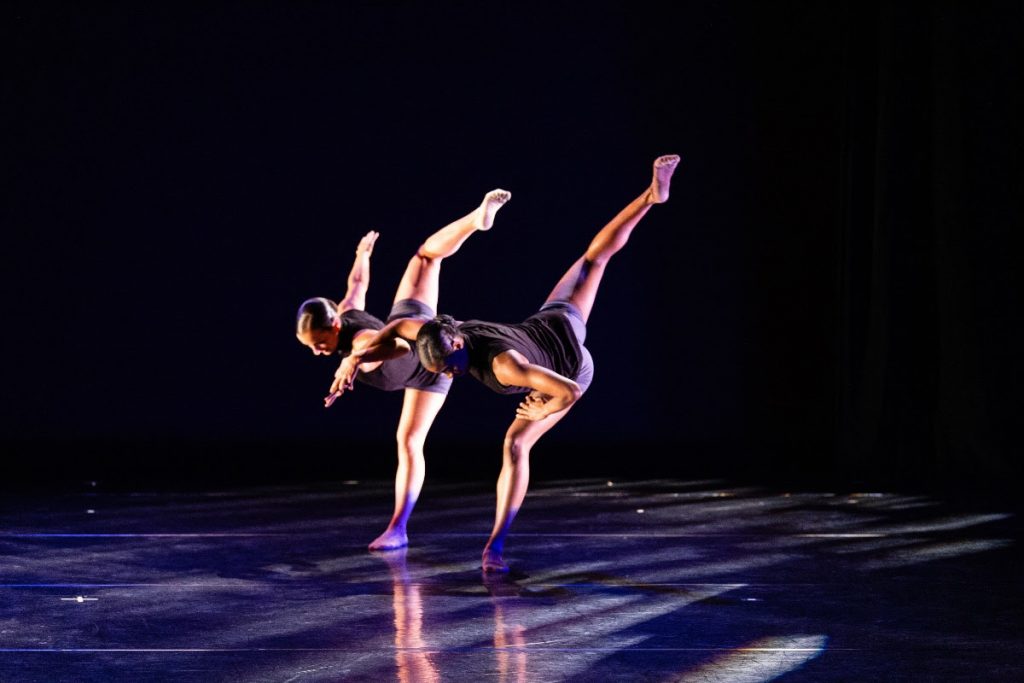
More conventional dance forms found representation too. Giordano Dance Chicago’s incubator company; Giordano II, chose to veer away from ostentatious and make restraint their centerpiece. Set to Nils Frahm’s serenely solemn score, Periphery exalted in control, thoughtful fluidity and elegance.
The stage’s proximity to the audience had a second important advantage. Its closeness allowed you to note the tiny deviations in performance that distinguishes one dancer from another. It’s those differences that become windows revealing each artist’s unique talents, skills and abilities.
Vadco/Valerie Alpert Dance’s excerpt from Moving through Memphis Project opened slowly on rhythms meant to instill tense anticipation. With dancers sitting still in a line on the floor, they stir and eventually appear to connect psychically. Their movements become less and less individualized and synchronize with the other dancers to form a bond transforming them into a single transfixing organism. Narrative explaining the inspiration for the work adds to the appreciation of it. Alpert’s visit to several Memphis historical sites including the National Civil Rights Museum and the Slave Haven Underground Railroad Museum planted the seeds for the Moving Through Memphis Project which was just representational enough to see and feel the dance’s link to what inspired it.
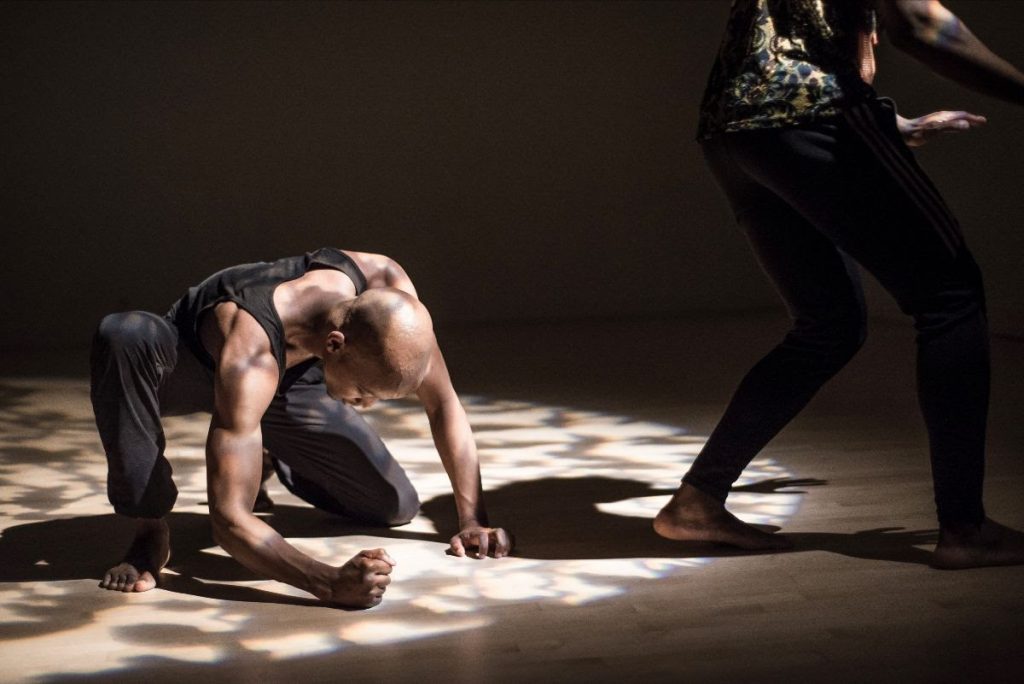
Physically powerful and psychologically engrossing, J’Sun Howard’s aMoratorium: at the altar, it may not be my time was an intensely absorbing duet that’s oddly not often seen. Intended to explore issues surrounding black male identity and visibility, the seriousness of the piece seemed to add to both its appeal and its strength. Howard’s bold choreography asked much of its dancers. Both Solomon Bowser and Damon Green seemed to easily master the piece as well as add an elusive spiritual component so essential in material that demands intimacy and a high degree of co-reliance. Tension, power, strength, vulnerability and resilience all had a palpable presence in aMoratorium. Fitting attributes for a work that was originally commissioned by the Art Institute of Chicago to commemorate the marvelous Charles White retrospective on exhibit last year.
The festival’s three solo pieces were harder to decipher. Two felt as if they may have been more suitable in the world of performance art. One, comedic parody and the other, extravagant and exotic mime. In the end, it’s the performers and the festival’s producers to decide in which camp they fall. As dance, some will find them challenging. If so, the festival’s organizers have succeeded in continuing to make us think about what dance is and how it can be expressed.
A second weekend of the festival runs September 27th and 28th with nine different companies bringing their own engrossing interpretations of what constitutes contemporary dance.
Harvest Chicago Contemporary Dance Festival
September 20 – 28, 2019
Ruth Page Center for the Arts
1016 N. Dearborn
Chicago, IL 60610
www.hccdf.com
